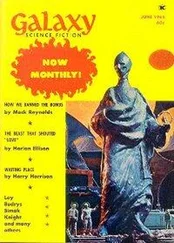“Mr. Matthers is up to his old tricks,” I repeated, for though Felicity had not extended any of her conversation invitations, neither was she humming or resting her forehead against the window.
“What has he done now? Taken to overseeing the labs with his legs bowed?” she replied, in a voice suggesting that she really did not care to know. Still, she had asked, and that was enough of an opening, particularly if I ignored the latter half of her question.
“Well,” I said, perhaps too eagerly. “Remember how you commented just last week that Mrs. Chavez is really starting to show?” Mrs. Chavez, who, like Felicity, is a math teacher, announced just after the Christmas holiday that she was pregnant.
“I do.”
“Well, Mr. Matthers has taken to asking her, every time he sees her, in fact, whether she has ever experienced a miscarriage. On Thursday, four or five of us were in the lounge, and we all heard him. We knew about it already, of course, because Mrs. Chavez had mentioned it to several of us.” This made it sound as though I were one of the people that Mrs. Chavez confided in, though that was not the case. “Then, Ms. Gutierrez scolded him right there in front of everyone. She told him that it wasn’t proper to ask any woman, but especially a pregnant one, whether she’d ever had a miscarriage.”
“And has he stopped?” Felicity asked, showing more interest than I expected.
“Well, I haven’t heard of anything else, but I left right at the bell on Friday. I had the show, you know.”
The show, because I realize that I haven’t explained about the shows yet, was a cat show in Los Angeles, for which I left immediately after school on Friday, returning Sunday afternoon in time to grade a set of mediocre essays before picking Felicity up from the airport. Felicity and I are both highly skilled cat judges and, as such, find our services requested at cat shows all over the world. When we were hired at the school, the principal, who is a cat lover as well (though of the mixed-breed, pound-affiliated variety), was quite accommodating about our obligations. In turn, as a gesture of goodwill, we put forth that, except in cases of emergency, we would not accept judging duties that resulted in our being absent from work at the same time. Thus, Felicity agreed to do the Hong Kong show while I stayed behind, holding up our end of the bargain, teaching while she was off, as it turned out, having her head shaved.
By this time, we were pulling into the school parking lot, so Felicity was preoccupied, taking it all in after a week away, her head pivoting in tight, frenetic movements, like a sparrow’s, which might have been the way she always moved her head, though, in the past, her hair was there to soften things. We got out of the car, walked across the parking lot and through the front doors, our paths diverging immediately — mathematics left, English right.
And so, I did not tell her about the other incident, the one that had nothing to do with Mr. Matthers at all. It happened on Friday, during third period, with the tenth graders, of whom I am rather fond. I had started them on Salinger, despite the fact that another English teacher, whose name I shall not disclose, had suggested that Salinger, with all his “New Yorkiness,” had little to “say” to a group of students who had grown up here in New Mexico.
“I believe that Salinger has something to say to all tenth graders,” I had replied, perhaps overearnestly. “I myself was once a tenth grader growing up in Minnesota, and I found that he had plenty to say.” I do not buy into this idea that one learns more from literature that is familiar; in fact, it seems only logical that one would learn most from subject matter that one has not already mastered through the daily grind of one’s existence, which is what I shall tell my colleague the next time she bothers me about Salinger.
I arrived in the classroom just as the bell was ringing, for I had paused briefly outside Mr. Matthers’s room on my way back from the teachers’ lounge, which is where I generally spend second period, my free hour. When I entered the classroom, the students were unusually still, already in their seats and seemingly engrossed in their Salingers. I felt a momentary thrill at being proven correct, but I had not turned to my right as I entered, so I did not yet know what was there, written in large letters on the blackboard.
“Good morning, class,” said I, then waited while they responded in kind, for one of the things that we had been working on was the forgotten art of basic, cross-generational politeness. They always had plenty to say to one another, but on the first day of class, they had stared blankly at me when I greeted them, and so I had related the story of my sixth-grade teacher, Mrs. Kjelmer, who required us to line up at the end of each day and pass by her on our way out of the room, pausing to shake her hand and thank her for some specific contribution that she had made to our educations that day. I am fairly sure that we did not find this odd or extreme, but my students had stared at me in horror as I recounted the tale, a few of them even gasping, as though each day had ended with the beheading of a student rather than this basic gesture of appreciation.
Having acknowledged their return greeting with an inclination of my head, I turned around toward the board, and there, in an awkward teenage scrawl, was their summary of my relationship with Felicity:
MISS LUNDSTROM & MISS SHAPIRO ARE LEZZIE LOVERS!!
My immediate reaction, as you might expect, was akin to my feelings upon takeoff — that is, I felt remarkably close to crying out, “Stop the plane!” Instead, I did what a speech teacher long ago had advised, which was always to act in opposition to what one’s nerves dictated. Thus, instead of mumbling and stammering my way through a demand to know whose work this was on the board, I turned back toward the class and asked, in a very precise, audible tone, whether anyone could recall my position on the ampersand.
There they sat with their mouths drifting open like a choir fading out after a sustained high note, and so I took several steps backward toward the board and pointed, with a surprisingly steady finger, at the offending ampersand. “This symbol, as you may recall, is called the ampersand. Like all symbols used to replace perfectly good words, it is, in my opinion, a symbol primarily of laziness and should be tolerated only on signs or in computer programming.” With the side of my hand, I deftly swiped at the ampersand, then picked up a piece of chalk and neatly wrote the word and in its place.
“Well,” I said, turning again to the class. “Who would like to go next?”
They were familiar with this exercise, of course, for each time I handed back a set of essays, I selected five particularly poor sentences from among them, which I copied onto the blackboard. Then we worked our way through them, one at a time, making corrections and revisions. Nonetheless, I was surprised when Keith, a short boy with a purple smattering of acne, raised his hand.
“Keith,” I said.
“The exclamation points?” he asked.
“What about them?” I prodded.
“Do you really need two of them?” The students understood how I felt about the exclamation point, the impact of which I illustrated early on by passing around a print of Edvard Munch’s The Scream .
“Good,” I said. “Though I think that begs the question, Do we really need even one?” I held the chalk out and Keith came dutifully to the front of the room, erased the exclamation marks, and inserted a simple period in their place.
“Well, I suppose that naturally brings us to the excessiveness of all uppercase lettering, does it not?” I said, the students nodding as I rewrote the statement in lowercase, retaining the essential capital letters, of course.
Читать дальше












